The barista-approved gear you need to recreate the coffee shop at home
Don't let the quarantine stop you from having the cafe experience.
One of the many, many downsides of quarantine is the demise of the daily ritual of heading down to the local coffee shop for a cup of black elixir. Sure, you can easily make coffee at home, but baristas typically make a much better brew. Plus, they have the equipment necessary to churn out drinks like espressos and lattes, which is much harder at home.
But a shelter-in-place is no reason to suffer through terrible instant coffee or mediocre machine drip. With the right equipment and some new techniques, you too can recreate professional-quality coffee in your own kitchen. I asked a couple of coffee connoisseurs in San Francisco -- Lea Sabado, co-owner of Excelsior Coffee, and Corazon Padilla, director of quality control at Andytown Coffee Roasters -- for their favorite gear and techniques for making coffee at home. The following are their recommendations, along with a couple of tips I’ve learned on my own.
The pour over method
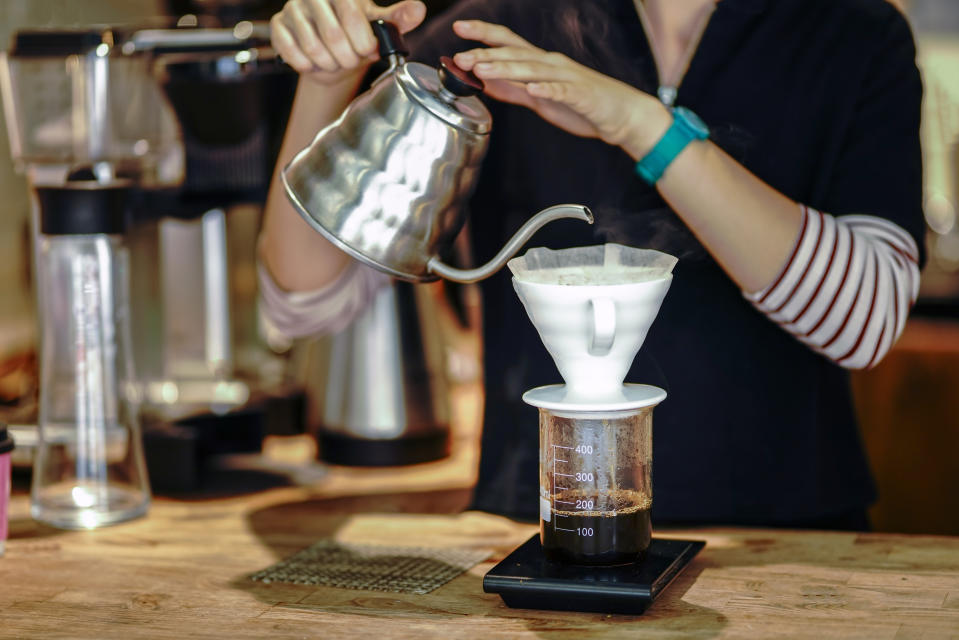
Both Sabado and Padilla agree that one of the best ways to get quality coffee at home is via the pour over method. Also known as manual brewing or hand brewing, this means pouring hot water through coffee grounds in a filter set inside a cone -- either into a carafe or directly into your cup. It’s a method that they frequently use in their own homes and in the coffee shop as well.
“I love this way because I love processes!” said Sabado. “It is beneficial to control the speed of your pour, while balancing the water over the grounds to get the maximum flavors of the ground. You also don’t waste coffee, as opposed to a big pot of coffee made in the morning.”
Thankfully, there are plenty of excellent pour over devices on the market, and prices range from cheap to expensive. Sabado recommends the Hario V60 ceramic cone (she has one herself) as a good affordable option for beginners, and suggests getting the Hario filters as well. But if you don’t mind investing a little more money, she prefers the Chemex. “If you’re committed to the full coffee experience and have the extra cash, I really love the Chemex. You can get a 3 cup or 6 cup Chemex, depending on how many people you have to cater to.”
Padilla also recommended the Hario v60 and the Chemex, along with the Kalita Wave and Fellow Stagg X as other pour over options. But a proper pour over kit consists of more than just the filter and the cone. For one thing, you should also invest in a good-quality kettle.
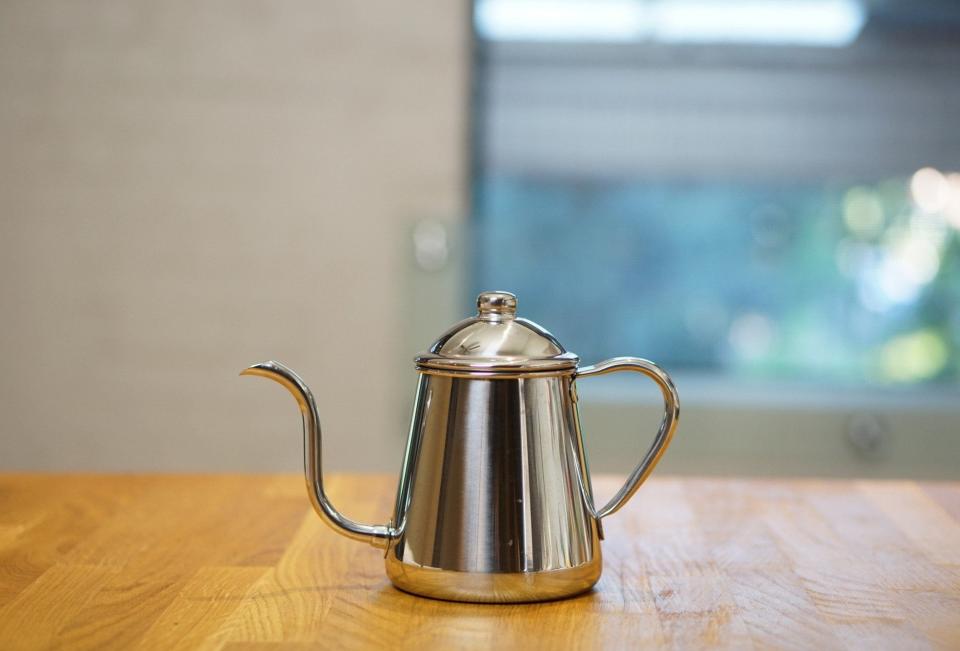
“A gooseneck kettle is necessary for pouring with precision,” said Padilla. “The Takahiro kettle and Fellow Stagg have excellent precision and are my favorite kettles, but I find the Hario Buono to also be a good choice and is a little more affordable.”
Other must-haves include a scale. To a novice, that might seem like overkill, but both Sabado and Padilla highly recommend them for barista-level pour overs. “Investing in a scale will do wonders for the coffee experience,” said Sabado. “I recommend the Hario V60 Scale/Timer as it's pretty great and has an approachable price point.”
Padilla agrees. “A scale with a built-in timer is helpful for weighing out coffee beans and measuring the amount of water in your pour over,” she said. She especially likes the Acaia Pearl, which also happens to be in our buyer’s guide for coffee geeks. “The Pearl has become a standard for a lot of coffee shops because of its quick response and accuracy in measuring weight.”
As for the ratio of bean to water, that depends on whether you prefer a stronger or weaker cup of coffee. “For pour over coffee, 1:15 is my starting point, but I like to play around with different ratios,” said Padilla. “It’s a great way to discover different flavor notes, and it’s also a great way to find what ratio you prefer the most.”
The water is important as well. “Always use hot water, preferably off-boiling at about 205 Fahrenheit,” said Padilla. “If your tap water is safe to drink, it’s fine to use that. Otherwise, bottled spring or drinking water will do. I would avoid distilled water; it tends to make bitter tasting coffee.”
The espresso machine (if you can afford it)
Recreating an espresso or a latte at home is a little trickier, and is often not something you can do without significant investment. Even the most affordable model often costs hundreds of dollars (The Wirecutter, for example, recommends the $400 Breville Bambino Plus as its pick for espresso beginners).
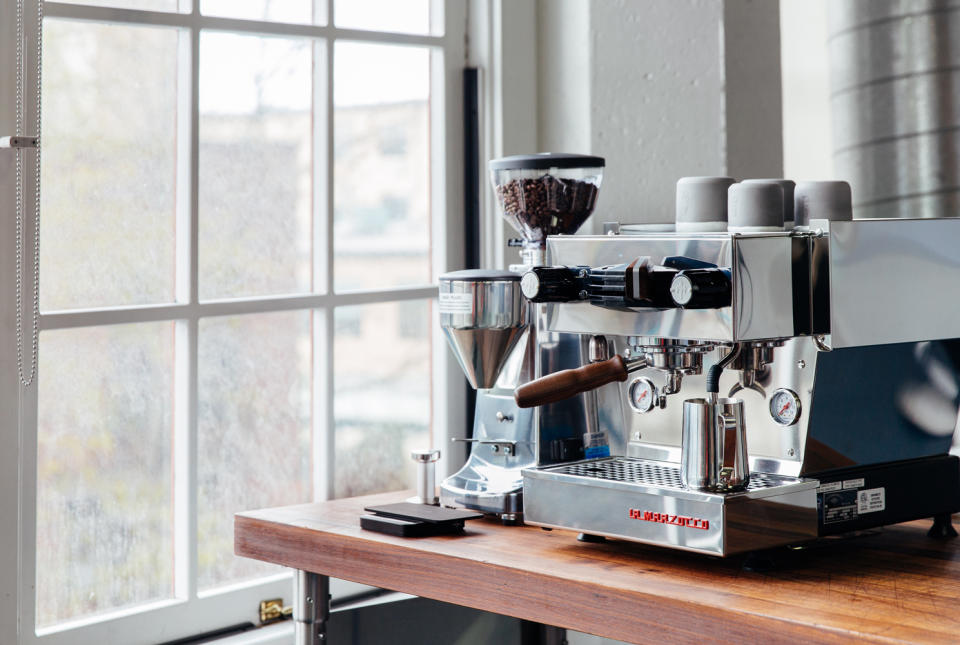
Perhaps unsurprisingly, both Sabado and Padilla have high standards when it comes to their choice of espresso machines, all of which cost well over $1,000 each. Padilla likes the high-end La Marzocco Linea Mini Espresso as it’s exactly the mini version of the Linea machines you see in a lot of coffee shops. “It’s super sleek and makes coffee just like in a cafe,” she said. However, it’s incredibly expensive at over $5,000. She’s also a fan of the Rocket Espresso line of machines, but those are also very pricey at over $1,600 each.
Sabado’s first espresso machine was a Nuova Simonelli Oscar, which she still has (The newer version, dubbed the Nuova Simonelli Oscar II, is priced over $1,200). “It’s not as sexy as other espresso machines out there, with a body made out of plastic. But it does its job,” she said. If you do opt for an espresso machine, she prefers models that have a tank you can fill in manually (as opposed to the ones that you need to directly plumb into your water lines).
The almost-espresso alternatives
If those exorbitantly high prices scared you off espresso machines, don’t worry, as there are other options available. “If you’re not hard-pressed on recreating the perfect espresso but want something that can help mimic it, the original Bialetti Moka Pot is a great choice for making stovetop ‘espresso,’” said Padilla. She also likes the Bialetti Brikka as it’s a newer version of the moka pot, which she says recreates the “crema” of the espresso nicely (The crema is the light layer of tan foam that sits on top of a freshly pulled shot of espresso, and is often viewed as the sign of a quality brew).
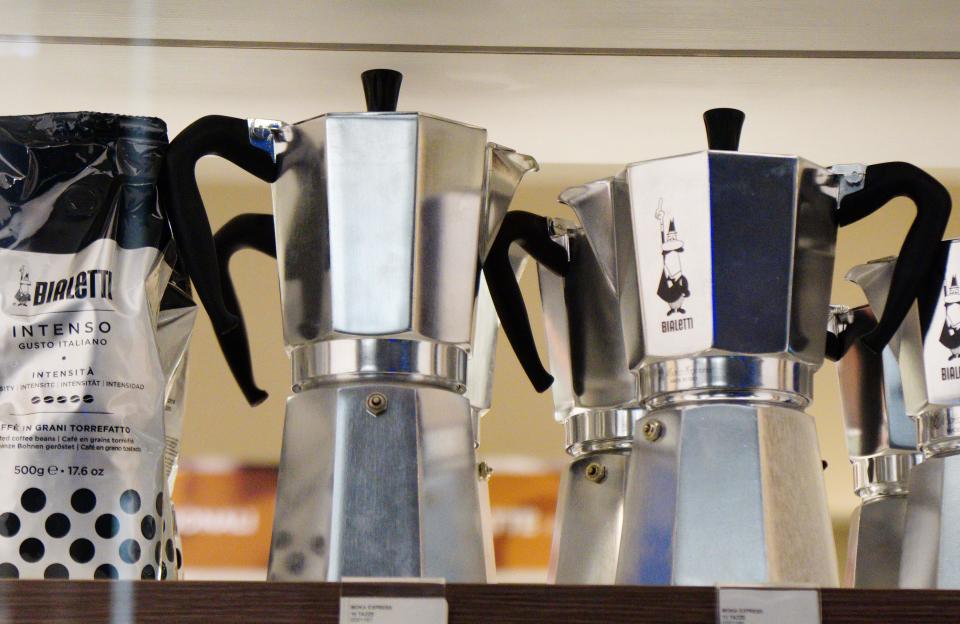
Another highly-recommended option is the AeroPress, a travel-friendly coffee gadget with a plunger design that’s been a favorite amongst coffee geeks for years. “If you’d like a versatile brewing device for both pour over and drip, then there is no other choice than the Aeropress,” said Padilla. “It’s super affordable and nearly indestructible. There are dozens of pour over recipes that people have created, and recreating an espresso-like concentrate with it is very simple.” To up your AeroPress game even more, she suggests getting the Fellow Prismo, an AeroPress attachment that makes the coffee even more espresso-like. “It does a pretty good job at recreating some crema,” she said.
If you want to make your own lattes or cappuccino without an espresso machine, then you might also want to invest in a milk steamer. Padilla likes the Bellman Stovetop Steamer. “It’s great at steaming milk and has the ability to produce the microfoam needed for a silky cappuccino or latte.” And if you want to try your hand at some latte art, she recommends a good-quality pitcher like the ones from Barista Hustle.
As a quick little cheat for something close to a latte, I personally recommend a cheap electric milk frother like the Aerolatte. It won’t steam the milk -- you’ll have to nuke the milk in the microwave for about 50 seconds instead -- and the resulting foam might not be as silky smooth, but it does the job just fine. To use it, stir the milk frother around the base of the cup until foam starts to form, then slowly raise it until it’s just below the foamy top to create even more froth. I’ve successfully used it with all kinds of milk, including non-dairy ones.
The grinder (and the coffee)
No matter which method of brewing coffee you choose, both Sabado and Padilla believe in grinding your coffee at home, ideally with a burr grinder. “Good coffee is near impossible to recreate without a good burr grinder,” said Padilla. “Baratza offers a wide variety of home grinders, and many are happy with getting the Baratza Encore. Capresso also makes decent home burr grinders.”
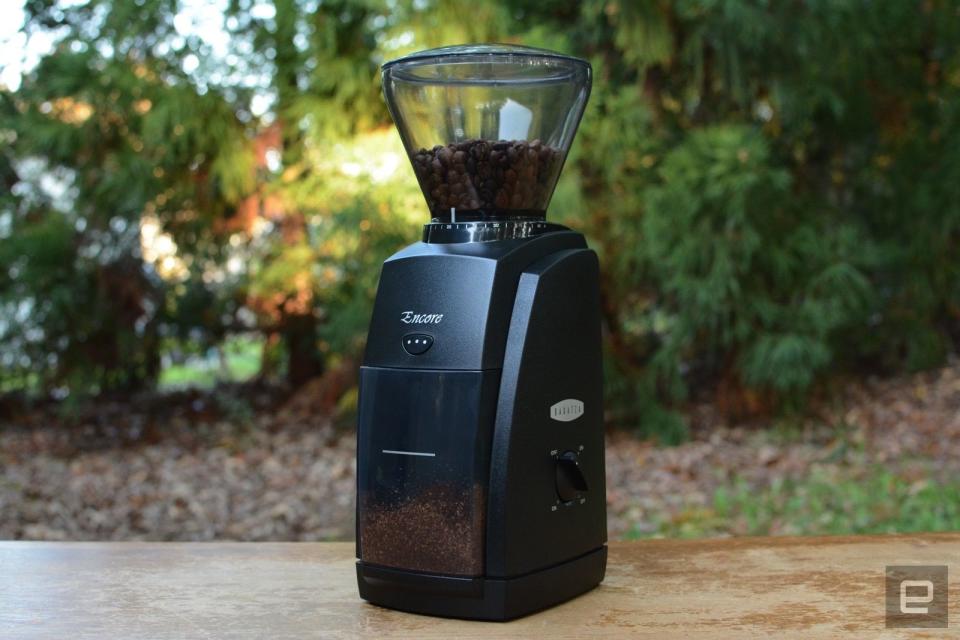
Sabado likes the Encore grinder as well, since it has different settings for different grind consistencies. “It’s versatile as you get into it, and grow your coffee knowledge,” she said. But if you’re only making coffee for one person, she suggests getting a hand grinder like the Hario Ceramic Coffee Mill to start. “I stick to hand grinders, not only because I like the process, but I am only drinking one cup of coffee a day.”
If you’re not sure you want to invest in a grinder, Padilla said it’s okay to have the barista grind it for you, but it just might not last very long. “The coffee will age a lot quicker than whole beans,” she said. “I would recommend consuming ground coffee within two weeks.”
Last but not least, I highly recommend investing in getting some quality beans. Like Senior Editor Billy Steele said in our guide for coffee geeks, I suggest looking for local roasters as they’re likely your best option for fresh beans. Otherwise, there are plenty of coffee subscription services available that are able to roast and ship on the same day or close to it. Steele likes Counter Culture and Hatchet, while I’m a fan of YesPlz and Sightglass.
